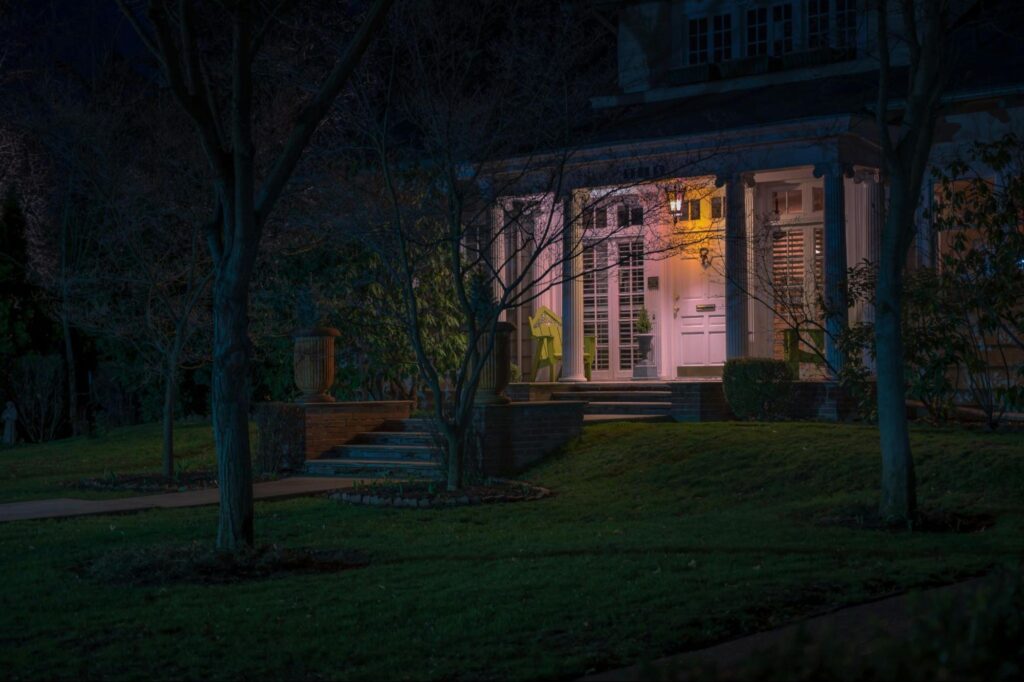UV protection is an important consideration when it comes to the design and functionality of windows. Many people are aware of the harmful effects of UV radiation, but how exactly do windows block these rays? In this article, we will explore the science behind UV radiation, explain how windows are designed to block UV rays, discuss ways to enhance UV protection for your windows, delve into the health implications of UV exposure indoors, and answer common questions about UV protection and windows.
The Science Behind UV Radiation
Before we delve into the role of windows in blocking UV rays, it’s important to understand the nature of UV radiation. UV radiation, or ultraviolet radiation, is a type of electromagnetic radiation that is emitted by the sun and artificial sources, such as tanning beds. It is classified into three types based on wavelength: UVA, UVB, and UVC.
UVA rays have the longest wavelength and can penetrate deep into the skin, causing skin aging and wrinkling.
UVB rays have a medium wavelength and are the primary cause of sunburn and skin cancer.
UVC rays have the shortest wavelength and are typically absorbed by the Earth’s atmosphere, so they do not pose a significant threat.
It’s fascinating to note that UV radiation plays a crucial role in various biological and environmental processes. For example, UV radiation is essential for the production of vitamin D in the human body. When UVB rays interact with the skin, a chemical reaction occurs that leads to the synthesis of vitamin D, which is vital for bone health and immune function.
Moreover, UV radiation also has disinfectant properties and is used in water treatment and air purification processes. The high energy of UV radiation can disrupt the DNA and RNA of microorganisms, rendering them unable to replicate and causing their death. This property makes UV radiation a valuable tool in maintaining clean and safe environments.
The Role of Windows in Blocking UV Rays
Windows plays a crucial role in protecting our indoor spaces from harmful UV radiation. They are designed to filter out a significant portion of UV rays, reducing our exposure and minimizing the potential health risks associated with prolonged UV exposure.
How Windows are Designed to Block UV Rays
Windows blocks UV rays through multiple mechanisms. One of the primary ways is through the use of special coatings and glazing materials that selectively filter out UV radiation while allowing visible light to pass through. These coatings are typically applied to the glass during the manufacturing process, making them an integral part of the window construction.
One common type of coating used for UV protection is a thin film layer that absorbs and reflects UV radiation. This film is transparent and does not affect the clarity of the window.
Another method used to enhance UV protection is the addition of UV-absorbing additives in the glass or windows. These additives help to absorb and neutralize UV radiation, preventing it from passing through the window.
But did you know that the design of the window frame itself can also contribute to UV protection? Window frames made from materials such as vinyl, fiberglass, or wood can provide an additional barrier against UV rays. These materials have natural UV-blocking properties, further reducing the amount of UV radiation that enters our indoor spaces.
Limitations of UV Protection in Standard Windows
While standard windows provide some level of UV protection, it’s important to note that their effectiveness can vary. Factors such as the type of glass, coatings applied, and the age of the window can affect the level of UV protection provided.
Standard windows typically block most of the UVB rays, which are the most damaging to the skin. However, they may allow a significant amount of UVA rays to pass through, which can still contribute to skin aging and other long-term effects.
To enhance the UV protection offered by standard windows, additional measures can be taken, such as the use of UV-blocking window films or treatments. These films are applied directly to the glass and provide an extra layer of protection against both UVA and UVB rays. They are designed to be transparent and can be easily installed without affecting the appearance of the window.
Furthermore, it’s worth mentioning that the angle at which sunlight hits the window can also impact the amount of UV radiation that enters a room. Windows that face the sun directly during peak hours may allow more UV rays to penetrate compared to windows that are shaded or have an overhang to block direct sunlight.
By understanding the various factors that affect UV protection in windows, we can make informed choices to ensure the well-being of ourselves and our indoor spaces. Whether it’s through the use of specialized coatings, UV-absorbing additives, or additional window treatments, taking steps to minimize UV exposure can contribute to a healthier and more comfortable environment.
Enhancing UV Protection for Your Windows
If you are looking to enhance the UV protection provided by your windows, there are several options available. Let’s explore two popular methods: UV-blocking window films and window treatments.
UV-Blocking Window Films and Their Benefits
UV-blocking window films are a popular choice for homeowners who want to increase the UV protection of their windows. These films are applied directly to the glass surface and provide an additional layer of UV filtration.
One of the key benefits of using UV-blocking window films is that they can be easily installed on existing windows without needing to replace the entire window. This makes them a cost-effective solution for those who want to enhance UV protection without breaking the bank.
UV-blocking window films are also effective in reducing the fading of furniture, flooring, and other interior elements that may be affected by UV exposure. By blocking a significant amount of UV rays, these films help to preserve the vibrant colors and integrity of your belongings.
It’s important to note that UV-blocking window films can vary in terms of their effectiveness and durability. When choosing a film, look for products that have a high UV rejection rate and are designed to last for an extended period. Investing in a high-quality film will ensure that you enjoy long-lasting UV protection for your windows.
Choosing the Right UV-Blocking Window Treatments
Another option to enhance UV protection is the use of window treatments. These include curtains, blinds, shades, and other coverings that can be adjusted to regulate the amount of sunlight and UV radiation entering a room.
When selecting window treatments for UV protection, consider the following factors:
- The material: Look for fabrics that are specifically designed to block UV radiation. These fabrics often have a tight weave or a special lining that helps to filter out UV rays. This ensures that even when the window treatments are open, they still provide a level of UV protection.
- The coverage: Choose window treatments that cover the entire window and provide maximum coverage to minimize UV exposure. Opting for floor-length curtains or blinds that extend beyond the window frame can help block out more UV rays.
- The adjustability: Opt for window treatments that allow you to easily adjust the amount of sunlight and UV radiation entering the room. This flexibility is especially beneficial when you want to balance UV protection with natural light and views. Look for window treatments with adjustable slats, cordless options, or motorized controls for effortless adjustments.
By carefully considering these factors, you can select window treatments that not only enhance UV protection but also complement the aesthetic of your space. Whether you prefer the elegance of curtains or the sleekness of blinds, there are UV-blocking options available to suit your style and needs.
Remember, protecting your windows from UV rays is not only beneficial for your health but also for the longevity of your interior furnishings. With the right combination of UV-blocking window films and window treatments, you can create a comfortable and sun-safe environment in your home.
Health Implications of UV Exposure Indoors
While most of us are well aware of the importance of sun protection outdoors, it’s worth noting that UV exposure can also occur indoors, especially when we are in proximity to windows.
Indoor UV exposure is a concern that often goes overlooked. Many people assume that they are safe from harmful UV rays once they step inside, but the reality is that these rays can penetrate windows and affect our health even when we are indoors. Understanding the potential risks and taking steps to protect ourselves is crucial for maintaining overall well-being.
Potential Risks of UV Exposure Through Windows
Exposure to UV radiation through windows can still pose potential risks, especially for people who spend long hours near windows or have prolonged sun exposure indoors. Some potential risks include:
- Skin damage: Prolonged exposure to UVA rays indoors can still contribute to skin aging, wrinkles, and other long-term effects.
- Fading of interior elements: UV radiation can cause carpets, furniture, and other interior elements to fade or discolor over time.
- Increased skin cancer risk: While UVB rays are greatly reduced indoors, cumulative exposure to UVA rays can still contribute to an increased risk of skin cancer.
It’s important to note that UV exposure through windows is not limited to direct sunlight. Even on cloudy days or in shaded areas, UV rays can still penetrate glass and reach our skin, potentially causing harm without us even realizing it.
The Importance of UV Protection for Indoor Spaces
Considering the potential risks associated with UV exposure indoors, it is essential to prioritize UV protection for our indoor spaces. By investing in windows that offer enhanced UV protection, such as those with specialized coatings or UV-blocking films, we can minimize our UV exposure and mitigate the associated health risks.
Additionally, incorporating other protective measures like using curtains or blinds during peak sunlight hours can further reduce UV exposure indoors. By being proactive about UV protection, we can create safer and healthier indoor environments for ourselves and our loved ones.
Frequently Asked Questions About UV Protection and Windows
Do All Windows Block the Same Amount of UV Rays?
No, the level of UV protection provided by windows can vary depending on several factors, including the type of glass, coatings, and age of the windows. It is recommended to consult with window professionals or manufacturers to determine the UV-blocking capabilities of specific window products.
How to Test Your Windows for UV Protection
If you are unsure about the UV protection offered by your windows, you can use a UV meter or a UV detector card to measure the amount of UV radiation passing through. These devices can provide valuable insights into the effectiveness of your windows in blocking UV rays.
Conclusion
Understanding UV protection and the role windows play in blocking UV rays is essential for maintaining a healthy and comfortable indoor environment. By investing in windows with enhanced UV protection features, such as special coatings or UV-blocking films, and incorporating appropriate window treatments, we can significantly reduce our exposure to UV radiation and minimize the associated health risks.
Remember, protecting ourselves from UV radiation doesn’t stop at applying sunscreen or seeking shade outdoors. Our indoor spaces also require attention and proactive measures to ensure adequate UV protection. Take the necessary steps to safeguard your health and well-being by prioritizing UV protection for your windows.


